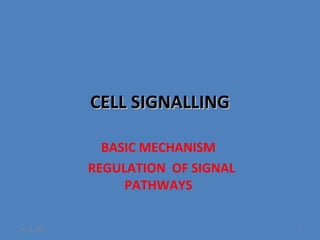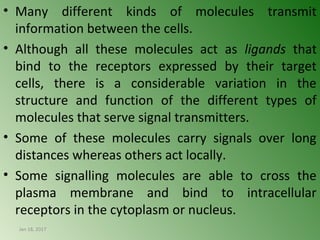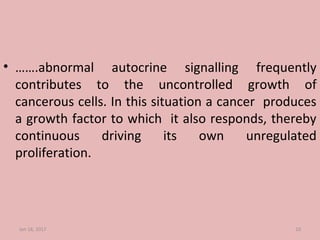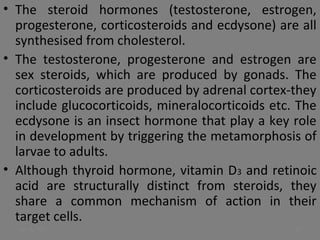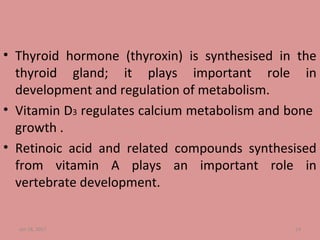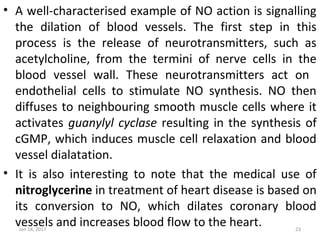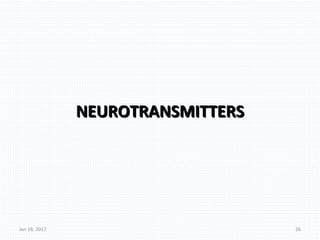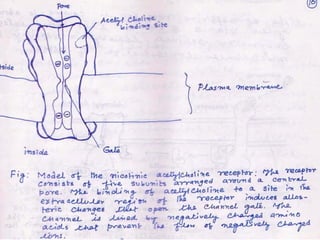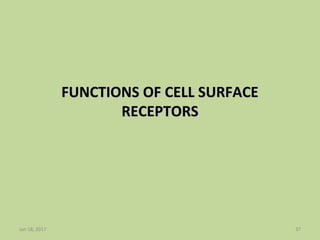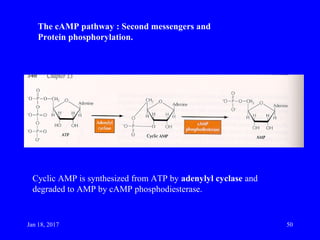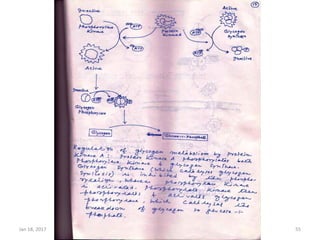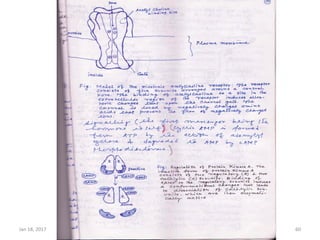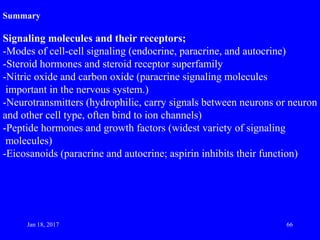Cell signalling occurs through the interaction of signalling molecules and receptors. Signalling molecules are secreted or expressed on cell surfaces and bind to receptors on other cells. This initiates intracellular reactions that regulate cell behavior. Signalling can occur through direct cell contact or through secreted molecules acting over short (paracrine) or long (endocrine) distances. Examples of signalling molecules include nitric oxide (NO) and steroid hormones. NO regulates blood vessel dilation by diffusing into cells and activating guanylate cyclase, while steroid hormones enter cells and regulate gene expression by binding nuclear receptors.
